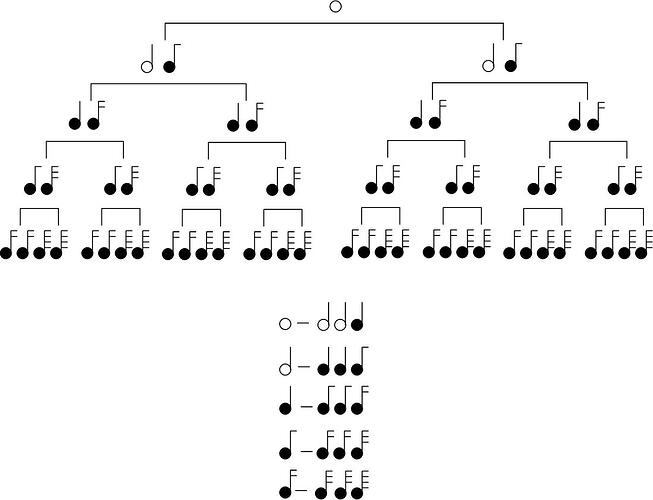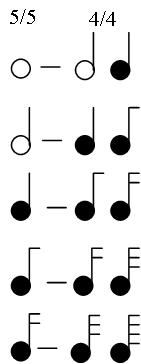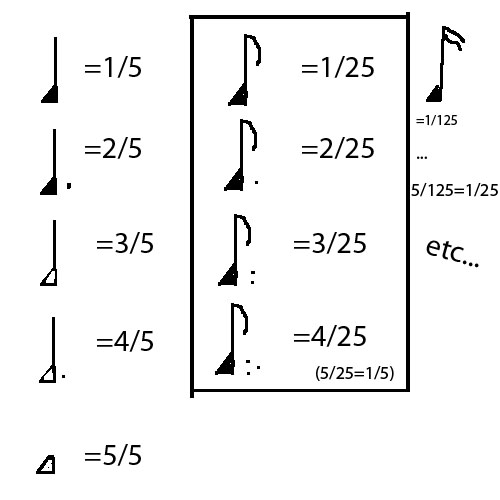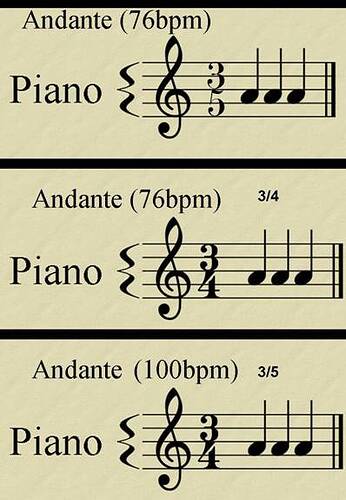Many say such a thing simply doesn’t exist, but I’ve had a problem with that.
The argument against is very crude and can be summed up in one sentence:
“There’s no such thing as a 5th note”
A 5th note would be a note that is 1/5th the duration of a whole note.
Like how a quarter note is 1/4th the duration of a whole note in 4/4 timing.
So…to me…I don’t see a problem at all.
Divide by 5 instead of 4.
Now normally, people just say, “Why not just use 5/4 timing? It allows you to put 5 quarters in a measure.”
True, but then again, a whole note in 5/4 is still 4 quarters…not 5.
Starting to see the picture?
Well, basically, true 5/5 would mean that when I write down a whole note, that it would take 5 quarters to fill up the time of the whole note.
Likewise, it would take 2 quarters and an eighth to fill up a half note (because we just divided 5 by 2, which is 2.5…2 quarters and half of a quarter…or known as and eighth note)
So, in the pursuit of proof that such a concept is actually possible, here is (for as far as I’m aware of) the first creation of a 5/5 note duration chart.
(If you would rather see the chart without the scroll bar [a bit easier], then click this link: download/file.php?id=246)



